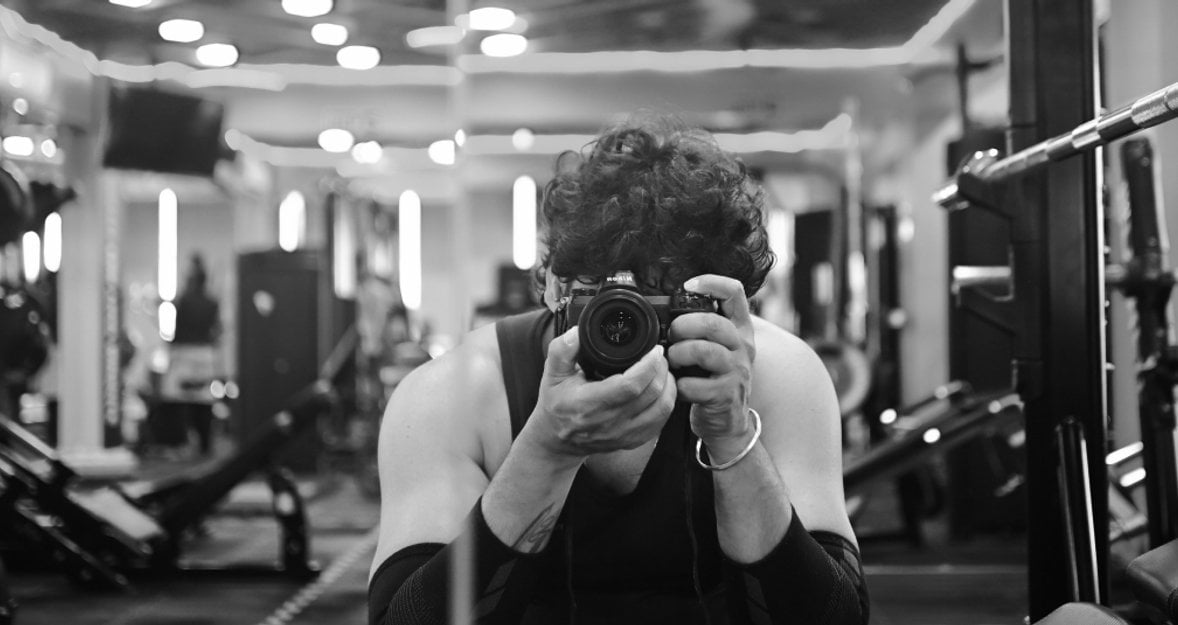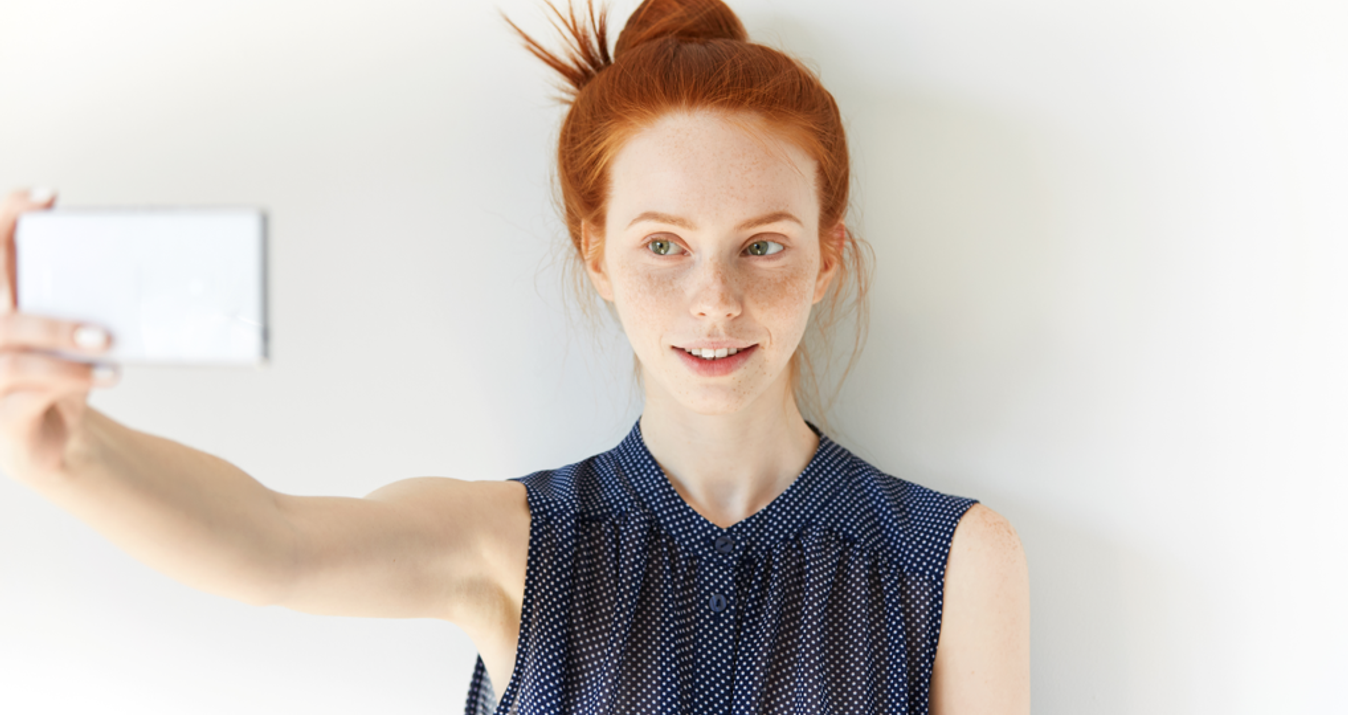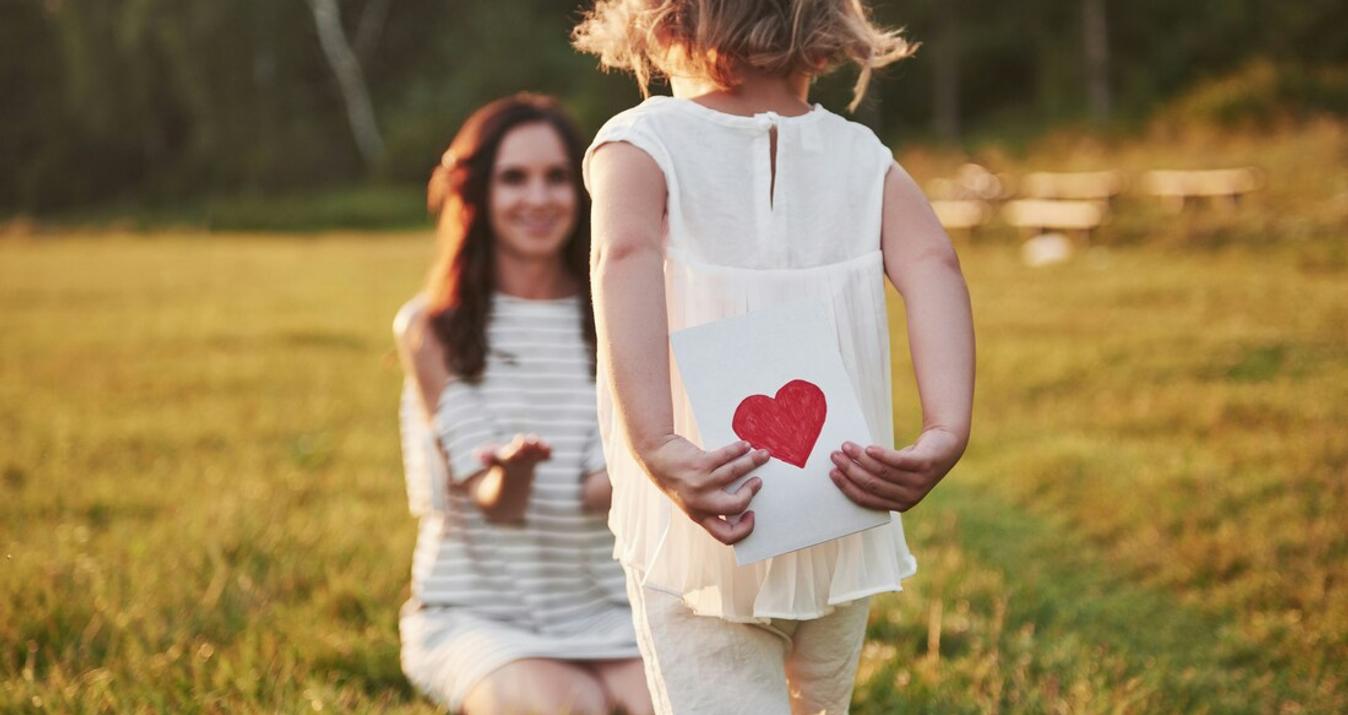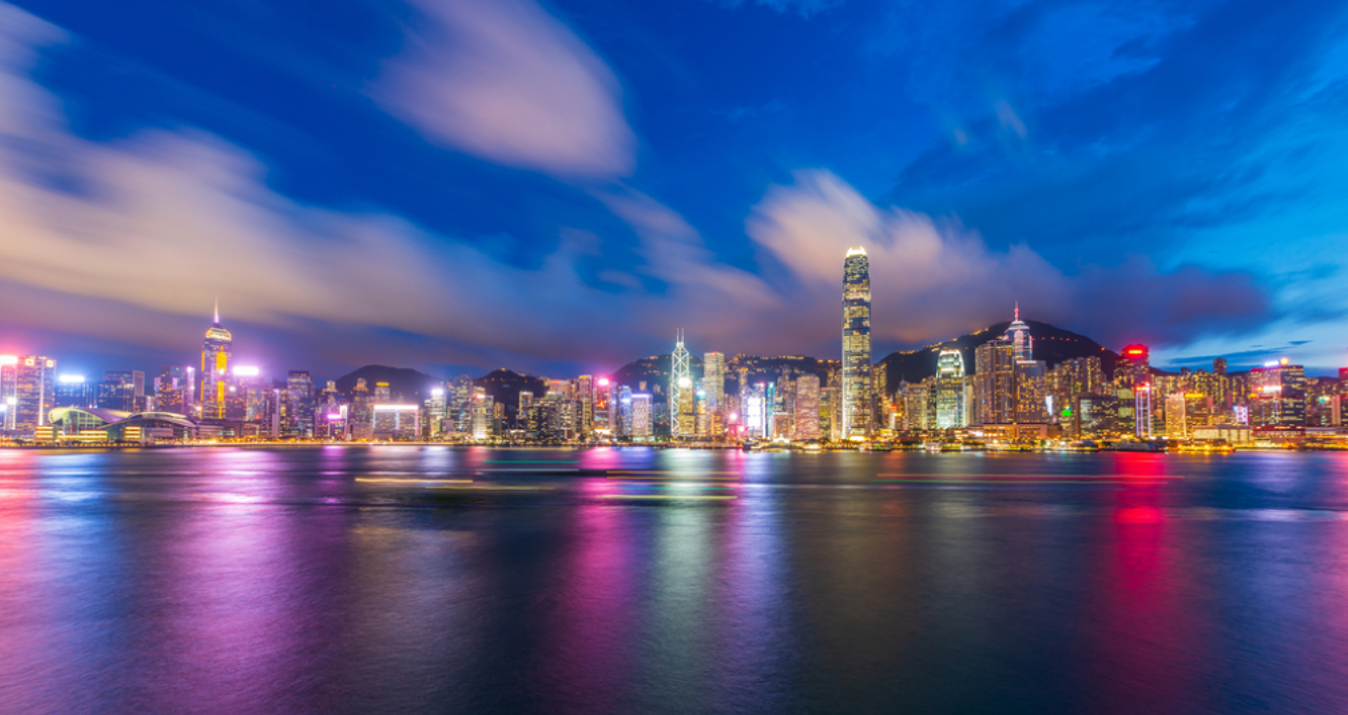7 Best Cameras for Selfies in 2025
Last Updated on January 10, 2025

Looking for the best camera for selfies in 2026? Discover 7 top-rated options to help you capture stunning self-portraits with ease and style.
Selfies are an indispensable part of life for anyone with even a little knowledge of the phone. The question is what quality they will be and what you should do to take your photos to the next level. If you have decided to try your hand at running your own page on social networks, this article will be your first point of departure.
We'll break down the best cameras for self-photography, why they're so important, how to pick the perfect digital companion, and a couple of helpful tips to improve your results. Grab your notepad and pen, because now you're about to learn how to make your photo look amazing.
Advanced yet easy-to-use photo editor
Get Luminar Neo NowWhy Does a Selfie Camera Matter?
Nowadays, a photo is a form of communication, with the help of which all your friends can immediately see that you have been to a new, interesting place, eliminating the need for everyone to describe the same events in words. A quality camera will help convey your impressions, capture the atmosphere, and color component, while not compromising quality, and will not create noise even in the darkest night.
A good camera will provide you with access to numerous advanced settings for each scenario, whether it's a photo taken at night in the field or from a trip where the sun relentlessly interferes with beautiful shots. The wide-angle lens will help you capture all the mesmerizing scenery or place a large group of people in the picture. A quality camera is your confidence in every picture you take, and its quality.
Review 7 Best Selfie Cameras
Are you ready to discover the best camera for selfies? We've selected seven fantastic cameras that are ready to capture your best moments. Let's explore each one and see which one best suits your selfie style.
1. Canon G7X Mark II
 The Canon G7X Mark II is a compact camera featuring a 20.1-megapixel 1-inch CMOS sensor, enabling low-light photography. The lens with f/1.8-2.8 (24100 mm Eq) has a shallow depth-of-field shooting capability and a constant aperture across the zoom setting.
The Canon G7X Mark II is a compact camera featuring a 20.1-megapixel 1-inch CMOS sensor, enabling low-light photography. The lens with f/1.8-2.8 (24100 mm Eq) has a shallow depth-of-field shooting capability and a constant aperture across the zoom setting.
Flip-up touch screen (180° up, 45° down) for taking selfies and capturing tough angles. Comes with a support vantage point shooting as much as 8fps and full HD 60fps recording ability, a feature that has built-in Wi-Fi and NFC for its transfer. Its size is appropriate for traveling and reportage photography, particularly in confined areas.
2. Sony RX100
![Best Selfie Camera To Capture [Hand-picked List] | Skylum Blog(3)](http://media.macphun.com/img/uploads/customer/blog/2628/17524911446874e48871df29.21638759.png?q=85&w=840) Sony RX100 is a professional camera that fits in the pocket. The fast autofocus system with high light sensitivity (up to ISO 12800). The used Exmor RS CMOS sensor has 20.1 MP and a 1-inch sensor size. The Carl Zeiss Vario-Sonnar T f/1.8-2.8 (24-70mm Eq) is capable of providing sharpness and shallow depth of field at low light.
Sony RX100 is a professional camera that fits in the pocket. The fast autofocus system with high light sensitivity (up to ISO 12800). The used Exmor RS CMOS sensor has 20.1 MP and a 1-inch sensor size. The Carl Zeiss Vario-Sonnar T f/1.8-2.8 (24-70mm Eq) is capable of providing sharpness and shallow depth of field at low light.
A fixed 2.36 million-dot electronic viewfinder (RV100 III-VII models) and an angular touchscreen are incorporated as well to allow simple shooting at various angles. It has a 4K HDR video recording (in newer models), fast shooting with up to 24 fps (in burst), and Wi-Fi/NFC that allows files to be transferred at high speed.
3. Canon SL2
 The Canon EOS SL2 (200D) features a high-resolution APS-C CMOS sensor with 24.2 megapixels and a DIGIC 7 image processor, offering low noise capabilities even at ISO 6400. The camera features a Dual Pixel CMOS AF system, which utilizes nine cross-type AF points to facilitate fast and precise focusing during both still image and video shooting and recording (Full HD 60p).
The Canon EOS SL2 (200D) features a high-resolution APS-C CMOS sensor with 24.2 megapixels and a DIGIC 7 image processor, offering low noise capabilities even at ISO 6400. The camera features a Dual Pixel CMOS AF system, which utilizes nine cross-type AF points to facilitate fast and precise focusing during both still image and video shooting and recording (Full HD 60p).
The touchscreen is variable-angle (it tilts 180 degrees for selfies, 270 top and bottom pictures) with 3 inches, and touch controls, including control of the focus point. The presence of built-in Wi-Fi, NFC, and Bluetooth enables one to transfer images to their smartphone and operate the camera remotely.
Although the SL2 has a compact size compared to a DSLR (122 x 93 x 70 mm, 453 g with battery), it still offers the benefits of physical buttons and a mode wheel. The system is flexible, supporting more than 70 EF/EF-S lenses to suit various genres of shooting.
The Creative Assist mode makes the camera compatible with beginner photographers. Enables you to switch to manual settings over time gradually.
4. Nikon D5300
 The Nikon D5300 features a 24.2-megapixel APS-C CMOS sensor, which captures more details in the image without an optical low-pass filter. The camera features the EXPEED 4 processor, which enables a high top speed of picture processing and an ISO range of 100-12800 (expandable to 25600).
The Nikon D5300 features a 24.2-megapixel APS-C CMOS sensor, which captures more details in the image without an optical low-pass filter. The camera features the EXPEED 4 processor, which enables a high top speed of picture processing and an ISO range of 100-12800 (expandable to 25600).
Its built-in 3.2-inch 1.037 million-dot swivel LCD enables you to use different shooting angles, including self-portraits, conveniently. The autofocus mechanism features 39 focus points, including nine cross-type points that can accurately track the subject.
D5300 allows shooting Full HD videos 60p in monaural sound with support for connecting to an external microphone. The camera features built-in Wi-Fi and GPS, allowing users to geotag pictures and eliminate the need for cables.
Its size is 125 x 98 x 76 mm, and its weight is 480 g (without lens). Courtesy of the Guide Mode feature, the camera can be used by novice photographers who are slowly learning the skills of manual control. The camera is capable of capturing images in continuous mode at 5 frames per second. In one burst, the files produced can be up to 100 JPEG files and 12 RAW files.
Advanced yet easy-to-use photo editor
Get Luminar Neo Now5. Pentax K-70
![Best Selfie Camera To Capture [Hand-picked List] | Skylum Blog(4)](http://media.macphun.com/img/uploads/customer/blog/2628/17524911686874e4a01e4337.87605797.jpg?q=85&w=840) The Pentax K-70 features a 24.2-megapixel APS-C CMOS sensor with no optical low-pass filter, allowing for enhanced detail in the image. It features a 5-axis built-in image stabilization system (SR II) that operates independently of changes in the optical equipment.
The Pentax K-70 features a 24.2-megapixel APS-C CMOS sensor with no optical low-pass filter, allowing for enhanced detail in the image. It features a 5-axis built-in image stabilization system (SR II) that operates independently of changes in the optical equipment.
The WR standard is a weatherproof (dust and moisture-proof) camera body. The ability to rotate the 3-inch LCD screen, whose resolution can be adjusted to 921,600 pixels, makes it the best camera for self-portraits among SLR cameras, as it is more convenient to take pictures from non-standard angles.
Autofocus has 11 points (9 cross-type) and the possibility of tracking focus mode. The ISO sensitivity ranges from 100 to 102400, providing high-quality shooting in low-light conditions. The camera supports Full HD 30p video recording and can output a clean signal via HDMI.
The continuous shooting speed reaches six frames per second, and the buffer capacity supports 40 JPEG or 10 RAW images. The Pentax KAF2 lens option offers a wide range of optics with features like weatherproofing.
With AstroTracer mode (using the O-GPS1 GPS device), you can automatically compensate for the movement of stars when taking astrophotos. The body measures 126 mm in width, 93 mm in height, and 74 mm in thickness, and weighs 688 g (with battery).
6. Fujifilm X-A5
 The Fujifilm X-A5 features a 24.2-megapixel APS-C CMOS sensor, which is designed without an optical low-pass filter, allowing for the capture of a high level of image detail. The camera has the Fujifilm X-Processor that supports 17 exclusive Fujifilm simulations like the old Provia, Velvia, and Acros.
The Fujifilm X-A5 features a 24.2-megapixel APS-C CMOS sensor, which is designed without an optical low-pass filter, allowing for the capture of a high level of image detail. The camera has the Fujifilm X-Processor that supports 17 exclusive Fujifilm simulations like the old Provia, Velvia, and Acros.
It defaults to a 3-inch, 1.040 million-dot LCD touchscreen that tilts vertically 180 degrees for easy selfies. The Fujifilm X-A5 has touch controls for selecting the focus point and shutter release, making it the best digital camera for selfies in its class. The autofocus has 91 focus points, face and eye recognition.
The latter has a camera that supports shooting in 4K up to 15fps and Full HD up to 60fps, along with a microphone port. It features built-in Bluetooth 4.1 and Wi-Fi, allowing for quick image transfers to a smartphone and remote camera control via the Fujifilm Camera Remote app.
Its body has a timeless Fujifilm design, is made of metal, measures 116 x 68 x 40 mm, and weighs 361 g (including battery and memory card). The camera supports Fujinon X-mount lenses, so you can use compact, simple, and fast lenses for professional shooting.
The advanced SR Auto automatically sets the best settings in different scenes, whereas Portrait Enhancer mode produces gentle skin correction. The shooting speed is non-stop at 6fps, maximum buffer is 10 frames in RAW size.
7. Panasonic Lumix ZS70
 The Panasonic Lumix ZS70 (TZ90) camera features a 20.3-megapixel 1/2.3-inch MOS sensor and Venus Engine image processor, which accelerates the image processing process. The camera features a 30x optical zoom (24-720mm equivalent focal length) with optical stabilization, Power O.I.S., to keep the image sharp regardless of the zoom setting.
The Panasonic Lumix ZS70 (TZ90) camera features a 20.3-megapixel 1/2.3-inch MOS sensor and Venus Engine image processor, which accelerates the image processing process. The camera features a 30x optical zoom (24-720mm equivalent focal length) with optical stabilization, Power O.I.S., to keep the image sharp regardless of the zoom setting.
It has a 3-inch 1,040k-dot resolution touchscreen LCD screen, which can be rotated 180 degrees and supports touch control. The embedded 1,166k-dot electronic viewfinder will offer a relaxing experience in the bright environment. The camera features up to 4K 30p (3840x2160) video recording, with the capability to capture 8-megapixel still frames during the video stream. Other specifications include 4K Photo mode (30/60fps) and Post Focus, which allows the focus point to be chosen after the picture is taken.
In-built Wi-Fi with Bluetooth makes file transfer and remote control to Panasonic Image App to be at high speed. It is one of the smaller models in the `ultrazoom category, with a camera body of 112 67 41 mm and weighing 322 g (including battery).
The lens features the LEICA DC VARIO-ELMARIT capability, which provides high-quality images across the entire zoom range. It has an ISO sensitivity range of 80 to 3200 (expandable to 6400) and can shoot continuously at up to 10 fps with manual focus.
Comparison of Camera Qualities in the Table
We have analyzed each camera separately, but it is difficult to compare a large amount of information. Therefore, we will translate it into a table format, where we will analyze only the positive and negative qualities of each of the above models.
Model | Pros | Cons |
Canon G7X Mark II | Excellent low-light performance Good image stabilization | Above-average price for compact cameras |
Sony RX100 | Professional image quality 4K video recording | High cost |
Canon SL2 (200D) | Affordable price, easy operation Good picture quality | Relatively cumbersome for beginners |
Nikon D5300 | Reliable Wide range of lenses Image quality | Greater weight and dimensions compared to mirrorless analogs |
Pentax K-70 | Dust and moisture protection Durable Versatility | Less compact design |
Fujifilm X-A5 | Stylish design Excellent color reproduction Creative modes | Limited choice of lenses |
Panasonic Lumix ZS70 | Powerful zoom (24-720 mm) 4K video Compactness | Poor performance in low-light conditions |
Now you have the opportunity to compare the qualities of cameras in a convenient format, which will help you decide on the best camera to take selfies with and not regret it in the future.
How to Choose the Perfect Selfie Camera
When you're looking for the best camera for self-portraits, it's not about fancy gizmos. It's about finding the one that's right for you. To find the right camera, you have to think like a camera, well, or not really. We'll refine the saying a bit and help you consider what to think about first when choosing a camera.
Determine the quality of pictures you want to take. The more megapixels (MP) and physical size of the sensor (like 1″ or APS-C), the more detailed the photos will be.
Check the front camera. Look for a wide-angle lens (24mm or more), autofocus, and skin correction modes.
Analyze the connectivity options. You can easily transfer photos from your smartphone via Wi-Fi, Bluetooth, or NFC.
Look at the screen. A tilting or swivel touchscreen (180°) will also help you capture selfies with ease.
Consider the possibility of portability. Mirrorless or flagship smartphones are smaller and hence more convenient to carry.
Check stabilization. Motion blur will be minimized by optical or digital re-stabilization.
Find out more modes. HDR, night mode, filters, and AI will bring creativity into images.
Compare price categories. There are good options among budget (up to 20,000 rubles), medium (20,000-50,000 rubles), and premium cameras (from 50,000 rubles).
Check the autonomy. If the camera is not a smartphone, make sure the battery will last for 300-500 shots.
Try it out before you buy. A test drive in a store will help you evaluate ergonomics and interface.
In the case of social networks, in some instances, a smartphone with a decent front-facing camera (e.g., iPhone 15 Pro or Samsung Galaxy S23 Ultra) is sufficient. Nevertheless, when you are willing to have professional-quality pictures, consider compact cameras (such as the Sony ZV-1 or Canon G7X III) or mirrorless cameras (such as the Fujifilm X-S10).
Enhancing Portraits with Editing Tools
![Best Selfie Camera To Capture [Hand-picked List] | Skylum Blog(5)](http://media.macphun.com/img/uploads/customer/blog/2628/17524918506874e74a3785a0.71531469.png?q=85&w=840) A camera never works alone; it is always paired with a reliable photo editor that is always ready to tweak unfortunate moments. Luminar Neo is one of them, and here's why.
A camera never works alone; it is always paired with a reliable photo editor that is always ready to tweak unfortunate moments. Luminar Neo is one of them, and here's why.
Smart tools for skin retouching;
automatic photo enhancement;
flexible work with backgrounds;
stylish filters and presets;
convenience and speed.
Goodbye to spots with Skin AI. This device will help you eliminate blemishes, and in the shortest time, you will have flawless skin. Whether it's selfies or close-ups, Skin AI can work its magic and give you a professional look in no time. In addition, it will not miss one scar, thus it is perfect.
One of the reasons Luminar Neo will be a hit with selfie enthusiasts is that it will combine automation (AI chips) with precise manual settings. It is a good choice if you want to enhance photos quickly and without complex work, but to achieve professional results.
Camera, Lights, Likes!
Remember that your camera choice can turn ordinary selfies into a social media sensation. Explore your options, choose the perfect one, and make your moments unforgettable. Plus, don't forget to enhance your selfies with editing tools like Skin AI and Face AI in Luminar Neo.

![Best Selfie Camera To Capture [Hand-picked List] | Skylum Blog(6)](https://media.macphun.com/img/uploads/uploads/skylum/blog/macbook-for-promo.png?w=50&q=50)



![Best Selfie Camera To Capture [Hand-picked List] | Skylum Blog(7)](https://media.macphun.com/img/uploads/uploads/skylum/neo/logo/neo-logo.png?w=240)